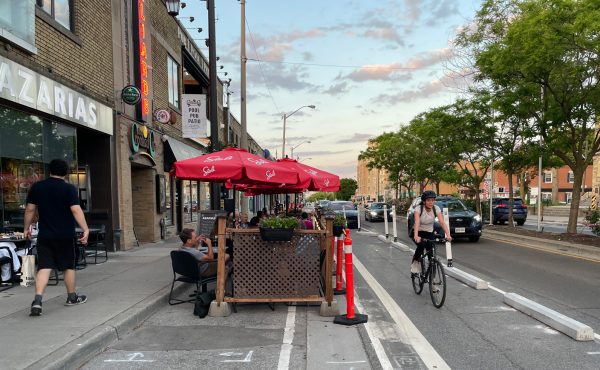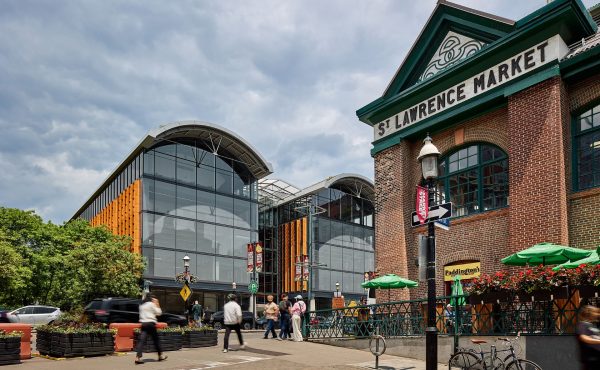
While the vision for Toronto’s waterfront may have been saved in the last day by the massive public and professional response to the Rob and/or Doug Ford alternate pop-up surprise vision, other sectors are beginning to mobilize. Below are two open letters from some cultural heavyweights. The first is from Gail Dexter Lord and Barry Lord, co-presidents of Lord Cultural Resources, a Toronto firm that does global business “creating cultural capital.” The second letter is from the Creative Capital Advisory Council. Photo of Gibson House by Retired Photo Guy.
![]()
Dear Friends and Colleagues:
This week, the City of Toronto’s Executive Committee approved a report from the City Manager to close “museums with the least attendance, and revenues compared to costs.” Another proposal asks the City Manager to report on further extensive cuts to culture programs.
These proposals indicate a misunderstanding of what museums are. In any city, museums are about identity, linking the past to the present. In Toronto, the world’s most multicultural city, museums are even more crucial to social cohesion.
Toronto’s historic museums – Montgomery’s Inn, Spadina House, McKenzie House, Colborne Lodge, Market Gallery, Gibson House, Zion Schoolhouse, Scarborough Historic Museum and Fort York – are the repository of our collective heritage. Destroy them and you destroy the DNA of who we are and how we got here. Each of these sites, whether they be in downtown Toronto, Scarborough, North York or Etobicoke, reflect not only our past, but are also neighbourhood hubs for sharing and learning about our modern diverse communities.
Clearly there is room for improving the attendance and the financial performance of these museums. However, closures are not the answer. The museum closings will be before City Council on Monday September 26th. I urge you to write to the Mayor and members of City Council to raise your voice in opposition to this proposal.
Gail Dexter Lord and Barry Lord
Co-Presidents
Lord Cultural Resources
![]()
September 20, 2011
Dear Mayor Ford and Councillors
City Council unanimously adopted the Creative Capital Gains Report, a plan that puts Toronto on target to be a Global Creative City through a balanced strategy of public and private initiatives.
As members of the advisory team appointed to produce this plan, we studied the issues for four months under the leadership of our co-chairs Robert Foster, President & CEO, Capital Canada Limited, Karen Kain, CEO, National Ballet and Jim Prentice, Senior Vice President and Vice Chairman, CIBC, with the advice of world famous economist Richard Florida, internationally respected consultant Gail Lord, Nichole Anderson, President & CEO, Business for the Arts, Cameron Bailey, Co-Director, Toronto International Film Festival, Claire Hopkinson, Executive Director, Toronto Arts Council, Che Kothari, Executive Director, Manifesto, Kevin Stolarick, Research Director, The Martin Prosperity Institute and the assistance of the Mayor’s advisor Jeff Melanson, Co-CEO, Canada’s National Ballet School, as well as Rita Davies, Director of Culture for the City.
The report proves that for Toronto to be economically successful in these competitive times, our City must be a Global Creative City. A thriving arts, culture and museums sector is key to success in attracting profitable industries (to provide employment), talented employees (to fill knowledge-based jobs), residents (to buy and rent property and pay taxes) and tourists to fill our hotels and shop in our stores. Wherever there is cultural activity, property values rise and revenue is generated. There is a reason Toronto is building more condominiums than any other city in North America.
The City has a crucial part to play by providing seed money so that other levels of government and the private sector can play their part. The private sector looks to the key government agencies to provide leadership, assess the alternatives and determine where funds should be allocated. Equally important is the role of the Mayor and Council in building confidence and providing a positive investment climate so that there can be “capital gains”.
We are deeply concerned that the budget alternatives being proposed will put the city back by 25 years at a time when the small level of investment recommended in the report and adopted by Council will move us to the top of the global competitive stage.
Toronto is the envy of cities world-wide. It is a delicate ecology that keeps us there. As our competitors (like New York, Chicago and Montreal) invest more per capita than we do – we must not invest less. They are strengthening their cities in cultural development because it builds a stronger economy. We have a head start. We cannot throw it away.
We also recognize the requirement to manage the city in a fiscally responsible manner and consequently we are prepared and wish to participate in a process that will assist in attaining the financial goals necessary to ensure we have a financially strong, vibrant city. We believe that this can be achieved without any reduction in the grant levels to our many arts organizations. We welcome an opportunity to review arts and culture spending with the goal of identifying potential efficiencies that will strengthen the city and the overall cultural sector.
We look forward to the opportunity to work with the city administrators to achieve these important goals as we continue to strive to build one of the great cities of the world.
Sincerely
The Creative Capital Advisory Council
Robert Foster
Karen Kain
Jim Prentice
Jeff Melanson
Gail Lord
Richard Florida
Kevin Stolarick
Nichole Anderson
Cameron Bailey
Claire Hopkinson
Che Kothari



6 comments
Fort York on the list? When the Gardiner (then Lakeshore) Expressway was being planned, it was originally be going through the Fort York grounds. It was diverted around it. Now, car-oriented Ford was to close museums like Fort York.
Maybe they’ll pave paradise and put up a parking lot, wth a pink hotel, a boutique, and a swingin’ hot spot…
Don’t it always seem to go
That you don’t know what you got ’til it’s gone
They paved paradise and put up a parking lot
These museums do not just serve tourism and educational purposes. They also preserve Toronto’s architectural heritage, a function to which attendance figures are IRRELEVANT. What happens if a museum is closed? Will its structure be razed? The only vestige remaining may well be the name that is inherited by the condo tower built where the museum used to stand.
Toronto simply does not many historic buildings that survive from its early days. If the Ford brothers have there way, they will obliterate the city’s heritage and replace it with ferris wheels.
Imagine going to Kingston and finding that Fort Henry was shut down, or to Halifax and finding that they had closed the Citadel, or going to PEI and finding they couldn’t afford to keep Green Gables open. It just wouldn’t happen!Let the stupidity stop now!
Organizations like the Market Gallery play a vital role in celebrating our past through exhibitions and publications. Some of Toronto’s most wonderful Art Deco buildings have already been lost through weak municipal heritage protection policies and decisions; closing museums further erases this vital part of our collective memory. The positive impact of cultural institutions cannot simply be measured in revenue versus expenses.
Clearly, Toronto’s heritage needs to be preserved and shutting down most of it’s historical landmarks is no solution to the economic problems plaguing our fair city. When I read the list of museums to be closed I decided to look each of them up individually and discovered that all but two (Montgomery House and Fort York) have no web presence except through toronto.ca./culture and that I didn’t even know several of them existed. This is not the fault of toronto.ca, of course, but of the person or group who’s responsibility it is to bring these places to the public’s attention and maintain an active interest in seeing that Toronto’s history is brought to life through educating students, engaging families in activities which keep each museum interesting and viable and informing new residents and tourists of their actual existence.
Looks to me like the problem is not that the landmarks need closing down but that the curatorial responsibilities need to be updated – maybe a group of people with a wider range of advertising skills and ways of connecting to schools, the public and tourism should replace the ones responsible for these things at present.
I think it’s a serious mistake for the Mayor’s office to threaten closure of everything cultural, art-related or otherwise that isn’t paying off at present instead of looking at the inner workings of these places to see where things can be IMPROVED. Fixing something worth fixing takes time – what the present administration is saying in effect is that the historical identity of Toronto just isn’t worth preserving.
So many of our older “heritage” buildings and examples of architecture have already been lost through demolition or neglect, or they were considered ‘old’ and outmoded, so needed to be replaced with newer more modern structures. Respect for the past was not given, and as a result, many beautiful & interesting buildings that were less than 50 years old which documented the architecture of the 50s and 60s have been removed or replaced. We are well aware that we almost lost “Old” City Hall in the modernization of Toronto before the “New” City Hall was built.
Fortunately we have a few fragments of some older substantial commercial buildings that were demolished in the 60s and these pieces were saved and moved into place by the foresight of visionary Spencer and Rosa Clark and are still standing in what was their property in the Scarborough Guild Inn gardens. But this is rare and unique.
Museums in our city are essential to record and preserve artifacts and historical information so as to educate its people about a past way of life and culture while providing a link to the present. But we know it costs money to maintain them and we must not lose what we have managed to save!!